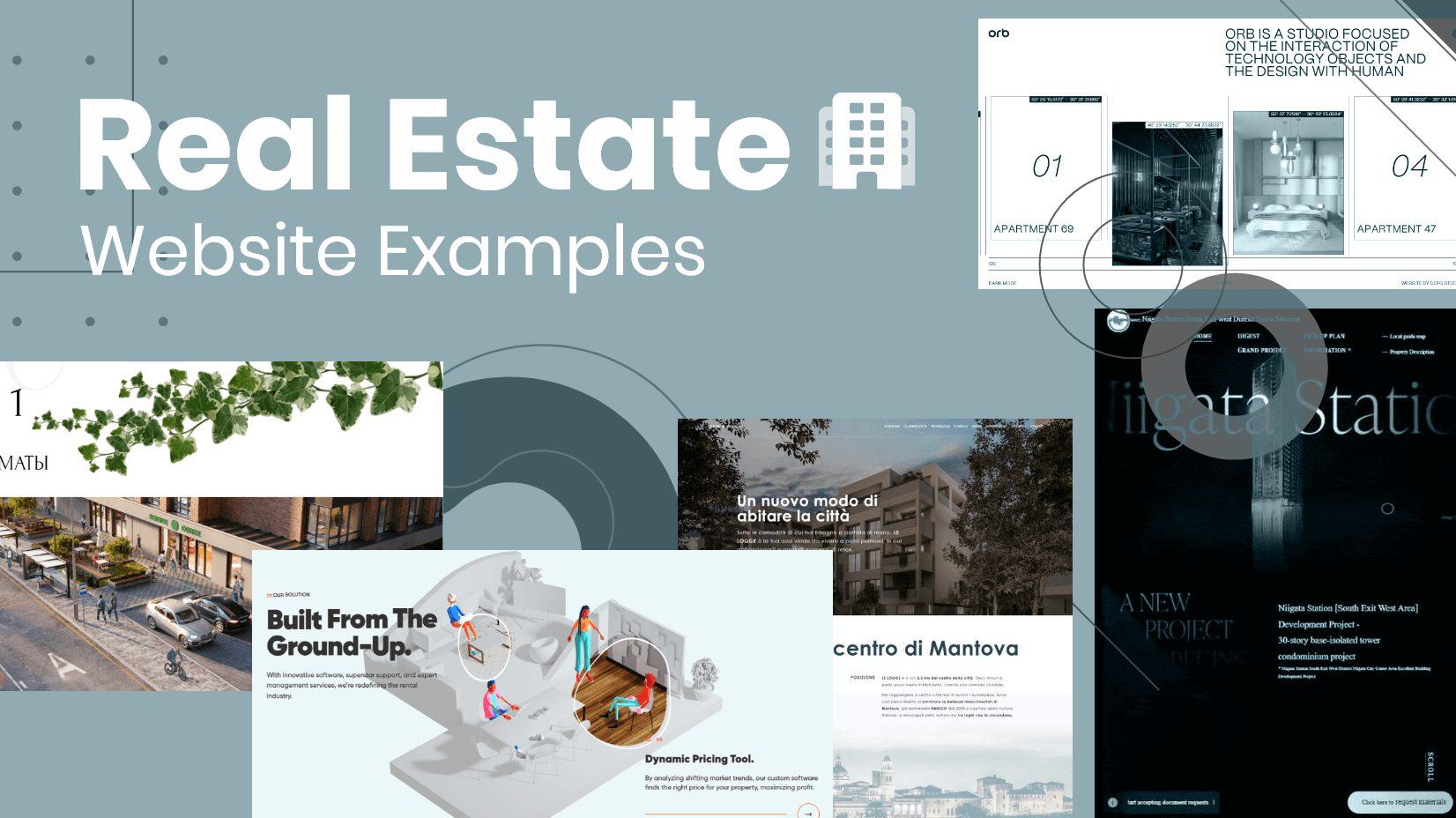In today’s fast-paced digital world, having a stunning online presence isn’t just a nice-to-have for real estate agencies—it’s a must. The landscape of real estate has shifted dramatically, with more buyers and sellers turning to the web to find thier dream homes. So, how can your agency stand out in this crowded online space? The answer lies in mastering real estate web design. A well-crafted website can be your most powerful tool for capturing leads and converting them into loyal clients. In this article, we’ll explore the essential elements of effective real estate web design, share tips and best practices, and reveal how you can turn your website into a lead-generating machine. Whether you’re revamping an existing site or starting from scratch, get ready to discover the strategies that can elevate your online game and help your agency thrive. Let’s dive in!
Understanding Your Target Audience to Drive Design Choices
When it comes to designing a real estate website, understanding your target audience is crucial. Your potential clients are not just numbers; they are individuals with distinct preferences, needs, and expectations. By identifying these characteristics, you can tailor your design choices to create a user-friendly surroundings that resonates with them.
Start by defining your typical client profile. Consider factors such as:
- Demographics: age, gender, income level, and family status can greatly influence design aesthetics and functionality.
- Geographic Location: Are they looking for urban properties, suburban homes, or rural retreats? Each area has its own unique appeal that should be reflected in your design.
- Technology Savviness: Understand how comfortable your audience is with technology. More tech-savvy users may appreciate innovative features like virtual tours or chatbots, while others might prefer a simpler interface.
Once you have a clear picture of your target audience, you can focus on how to engage them effectively. As an exmaple,a website aimed at younger,first-time homebuyers might benefit from a vibrant,mobile-friendly design with easy navigation and informative resources. On the other hand, a site targeting luxury property buyers could draw on sophisticated design elements, high-resolution images, and a more polished aesthetic.
Another essential aspect is the content strategy. Knowing what your audience wants to read can guide your design layout. Such as:
| Audience Type | Preferred Content |
|---|---|
| first-time Buyers | Guides, FAQs, and financial advice |
| Investors | Market trends, investment tips, and ROI calculators |
| Luxury Buyers | High-end listings, lifestyle blogs, and exclusive area insights |
don’t underestimate the power of user feedback.Implement analytics tools and conduct user surveys to gather insights into how visitors interact with your site. This feedback loop allows you to make informed adjustments to your design and content, ensuring it remains aligned with your audience’s evolving preferences.
By prioritizing your target audience in every design decision, you not only create a visually appealing website but also foster a connection that can lead to higher engagement and increased leads. Remember,a well-designed site is one that speaks directly to the hearts and minds of its users.
Creating a User-Friendly Navigation Experience That Converts
In the fast-paced world of real estate, first impressions are crucial. A well-structured navigation design can make all the difference in guiding potential clients through your website. When visitors feel at ease while browsing, they are more likely to engage with your content and ultimately convert into leads. Here are some key tactics for creating a seamless navigation experience:
- Simplicity is key: Aim for a clean and straightforward menu structure. Limit the number of main menu items to avoid overwhelming visitors. A well-organized layout helps users find what they need quickly.
- Descriptive Labels: Use clear and intuitive labels for your navigation links. Instead of generic terms like “Services,” opt for more specific phrases like “Buy a Home” or “Sell Your Property.” This clarity helps users understand what to expect.
- Consistent Design: Keep the style of your navigation consistent throughout the site. This includes the color scheme, fonts, and button styles. A unified design creates a sense of familiarity and trustworthiness.
Also, consider implementing a responsive design that provides a seamless experience across all devices. With a significant number of users accessing websites via smartphones and tablets, make sure that your navigation adapts to different screen sizes. A mobile-friendly design improves usability and accessibility, leading to higher conversion rates.
Another essential aspect is incorporating a search function. A visible and easily accessible search bar can drastically enhance user experience, allowing visitors to find specific properties or facts without having to navigate through multiple pages. This can be a game-changer for keeping potential leads engaged with your content.
| Navigation Element | Purpose | Impact on Leads |
|---|---|---|
| Main Menu | Guides users to key sections | Increases time spent on site |
| Search Function | Helps find specific listings | Boosts lead generation |
| Contact Buttons | Facilitates swift inquiries | Enhances conversion opportunities |
Lastly, remember to test your navigation design. Gather feedback from real users and analyze website metrics to identify any potential roadblocks. By prioritizing user experience in your navigation, you not only enhance satisfaction but also create a pathway for increased conversions. When potential clients can navigate your site with ease, they are more likely to trust you with their real estate needs.
The Power of Visual Appeal: Using High-Quality images and Videos
In the competitive world of real estate, first impressions are everything. High-quality images and engaging videos can be the difference between a potential lead clicking away or reaching out for more information.When it comes to showcasing properties, nothing speaks louder than stunning visuals that capture the essence of a home.
Investing in professional photography is crucial. Properties that are photographed well not only attract more visitors but also create a sense of trust and professionalism. Buyers want to see clean lines, vibrant colors, and inviting spaces that allow them to envision their future home. Here are some benefits of using high-quality visuals:
- Enhanced Engagement: beautiful images grab attention and can increase the time visitors spend on your site.
- Improved SEO: Alt text for images and video content can boost your search engine rankings, making your agency more discoverable.
- Stronger Emotional Connection: High-quality visuals evoke emotions, making potential buyers feel more connected to the property.
Videos take it a step further. A well-produced property tour allows viewers to experience a home as if they were walking through it themselves. This immersive experience can be pivotal for helping potential buyers make their decisions. When creating videos,consider the following elements:
- Storytelling: Craft a narrative that highlights the home’s unique features and its surrounding community.
- Quality Production: Invest in good lighting and sound quality to ensure a professional finish.
- Call to Action: Always include a strong call to action at the end of your video, guiding viewers on the next steps.
While images and videos are essential,the way they are displayed on your website matters just as much. A clean,organized layout can enhance the visual appeal of your content. Consider using a responsive design that adjusts to various devices, ensuring potential clients have a seamless experience, whether they are on a computer or mobile device.
| Type of Visual Content | Impact on Leads |
|---|---|
| High-Quality Images | Increase click-through rates by up to 80% |
| Virtual Tours | generate 95% more inquiries |
| Drone Footage | Showcases larger properties effectively |
Ultimately, the goal is to create a visual narrative that not only showcases the properties but also reflects your agency’s brand. By integrating high-quality images and videos into your web design,you can elevate the user experience and significantly boost your lead generation efforts. In a world where first impressions are made in seconds, ensure that your visual content is not only compelling but also an accurate reflection of the properties you represent.
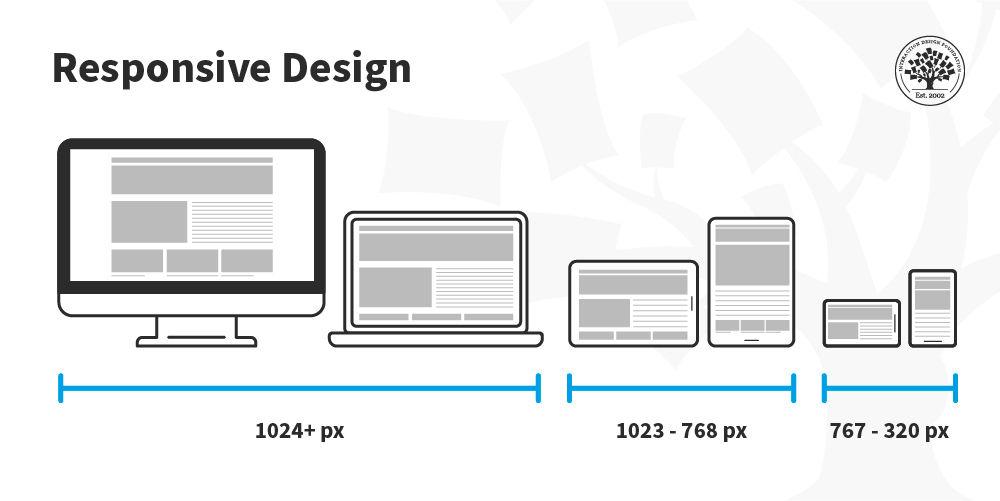
Optimizing for Mobile: why Responsive Design is Crucial
In today’s fast-paced digital world, where smartphones and tablets dominate browsing habits, responsive design is no longer just an option; it’s a necessity. Real estate agencies that fail to optimize their websites for mobile devices risk losing potential leads. A seamless mobile experience can significantly influence a user’s decision to engage with your listings.
Consider the following reasons why adopting a responsive design framework is crucial:
- Enhanced User Experience: A responsive design ensures that your website adapts to various screen sizes, providing an optimal viewing experience across all devices. Users can easily navigate your site, view listings, and contact you without frustration.
- Improved SEO Rankings: Search engines like Google prioritize mobile-friendly websites in their rankings. By optimizing your site for mobile, you not only enhance user experience but also improve your visibility online, leading to more organic traffic.
- Increased Engagement: Users are more likely to stay on your site if it loads quickly and functions well on their devices. A responsive design can lead to longer session durations and lower bounce rates, increasing chances of lead conversion.
- Cost-Effectiveness: Rather of creating and maintaining separate desktop and mobile versions of your site, a responsive design allows you to manage a single site. This approach saves time and resources, which can be redirected towards marketing and lead generation strategies.
To highlight the impact of mobile optimization, let’s look at some statistics:
| Statistic | Impact |
|---|---|
| Over 50% of web traffic comes from mobile devices. | increased need for mobile optimization to capture this audience. |
| 70% of mobile searches lead to action within an hour. | potential for immediate lead generation if your site is optimized. |
| Websites that load in 3 seconds or less see a significantly lower bounce rate. | Faster loading can lead to higher engagement and conversions. |
Investing in a responsive design is not just a trend; it’s a strategic move that aligns with the way people consume information today. By ensuring that your website is mobile-friendly, you’re not only meeting users where they are but also paving the way for a more prosperous online presence in the competitive real estate market.

Crafting Compelling CTAs That encourage Engagement
Creating effective calls-to-action (CTAs) is essential for enhancing user engagement on your real estate website. A well-crafted CTA not only guides visitors but also prompts them to take the next step in their real estate journey. Here are some strategies to make your CTAs more compelling:
- Be Clear and Concise: Your message should be straightforward. Use action-oriented language that clearly indicates what the user can expect. Such as, rather of “Submit,” try “Get Your Free Market analysis.”
- Create Urgency: Encourage prompt action by incorporating time-sensitive offers. Phrases like “Limited Time offer” or “Act Now” can spur visitors to engage instantly.
- Highlight Value: Users want to know what’s in it for them. By emphasizing benefits,such as “Download Your Free Buyer’s Guide” or “Schedule a Free Consultation,” you increase the likelihood of interaction.
- Use eye-Catching Design: Make your CTAs visually appealing. Employ contrasting colors and bold fonts to ensure they stand out on the page.
Additionally, consider placing CTAs strategically throughout your site. Here’s a simple table illustrating effective placement:
| Location | Recommended CTA |
|---|---|
| Homepage | “View Our Listings” |
| Blog Posts | “Subscribe for More tips” |
| Property Pages | “Schedule a Showing” |
| Contact Page | “Get in touch Today” |
don’t underestimate the power of A/B testing your CTAs. Experiment with different phrases, colors, and placements to find the combination that resonates best with your audience. Regularly analyzing the performance of your CTAs can provide valuable insights into what drives user behavior.
always ensure that your CTAs align with the overall user experience on your site. A well-defined journey from landing on your page to taking action enhances trust and encourages users to move forward. By crafting CTAs that resonate with your audience,you not only boost engagement but also increase your chances of converting visitors into leads.
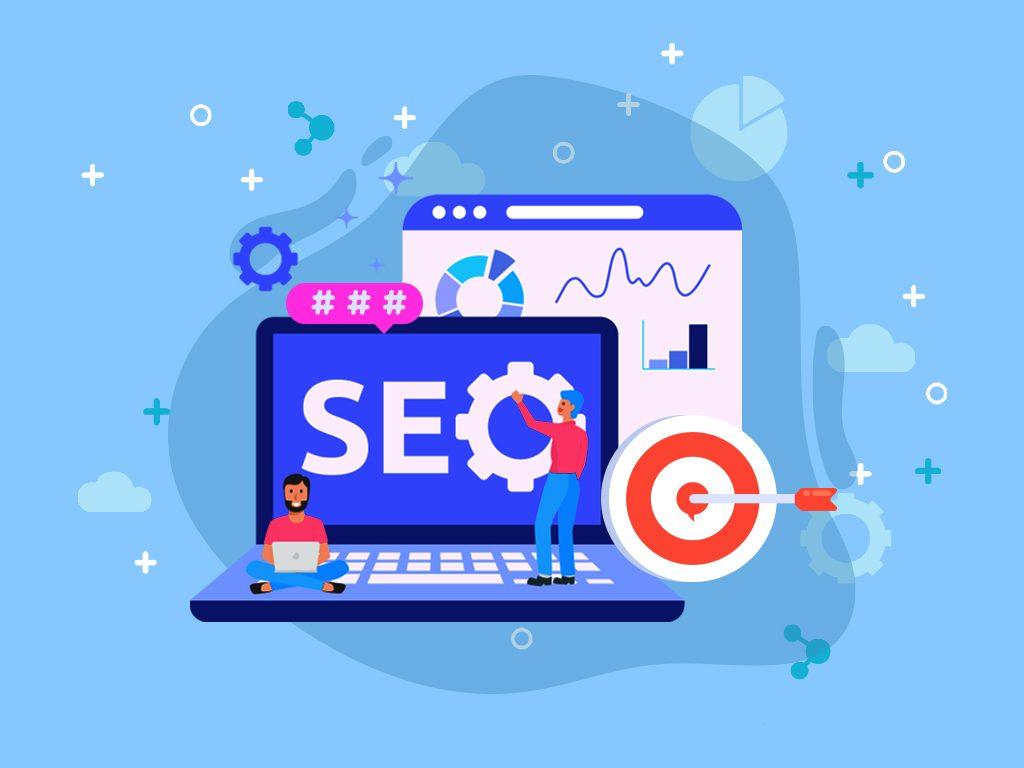
Enhancing Your Website’s SEO to Boost Visibility
In the competitive landscape of real estate, having a visually appealing website is just the beginning. To truly stand out and attract potential clients, enhancing your website’s SEO is crucial. A well-optimized site not only improves your visibility on search engines but also drives more organic traffic to your listings.
The first step in boosting your SEO is to conduct thorough keyword research. Understanding what potential clients are searching for is vital. Focus on incorporating long-tail keywords specific to your niche, such as:
- “luxury homes in [your city]”
- “best real estate agents near me”
- “affordable apartments in [your neighborhood]”
Integrate these keywords naturally into your website’s content, including titles, meta descriptions, and blog posts, to signal to search engines that your site is relevant to users’ queries.
Next, ensure your website is mobile-friendly. With the rise of mobile searches, Google prioritizes mobile-optimized sites in its rankings. A responsive design not only improves user experience but also helps in reducing bounce rates, which is another factor that can positively influence your SEO.
Additionally, consider creating valuable content that resonates with your target audience. This could be in the form of blog posts,guides,or videos about:
- The home buying process
- Neighborhood highlights
- Market trends and insights
By providing informative and engaging content,you can establish authority in your field and encourage users to spend more time on your site,which can further boost your search engine ranking.
Don’t forget the importance of local SEO. Claim your Google My Business listing and ensure your contact information, including your address and phone number, is consistent across all platforms. this consistency helps search engines understand your business better and improves your chances of appearing in local search results.
| SEO Strategy | Benefit |
|---|---|
| Keyword Optimization | Improves visibility on search engines |
| Mobile Optimization | Enhances user experience and reduces bounce rates |
| Valuable Content Creation | Establishes authority and engages visitors |
| Local SEO Techniques | Increases chances of appearing in local searches |
don’t underestimate the power of backlinks. Build relationships with local businesses, blogs, and influencers to acquire high-quality backlinks, which can significantly enhance your site’s authority and trustworthiness in the eyes of search engines.

Integrating Social Proof: Showcasing Testimonials and Case Studies
In today’s competitive real estate market, potential clients often turn to others for reassurance before making decisions. This is where testimonials and case studies come into play, acting as powerful tools to build credibility and trust. By showcasing the positive experiences of past clients, you turn your website into a hub of social proof that can significantly influence the behaviors of prospective leads.
When integrating testimonials, consider placing them prominently on your homepage and throughout your site. Here are some effective strategies:
- highlight Client Success Stories: Share brief narratives that outline how your agency helped clients achieve their real estate goals. Use a mix of text and visuals for more impact.
- Utilize Video Testimonials: A short video of a satisfied client discussing their experience can be far more engaging than written text alone.
- Showcase Ratings and Reviews: Incorporate star ratings and snippets of reviews from platforms like Google or Zillow to validate your services.
Case studies can also be a game-changer, allowing you to delve deeper into your successes and demonstrate your expertise. To create compelling case studies, focus on:
- The Challenge: Describe the specific obstacles your client faced.
- The Solution: Explain how your agency addressed these challenges with tailored strategies.
- The Results: Share measurable outcomes, such as the increase in property value or the speed of a sale.
Consider organizing your case studies in a visually appealing way. You can use tables to summarize the key components of each case study, making it easier for potential clients to digest the information quickly:
| Client | Challenge | Solution | Results |
|---|---|---|---|
| John & Lisa Doe | Stale listing for 6 months | Revamped marketing strategy | Sold in 3 weeks at 10% above asking |
| Sarah Smith | Low foot traffic at open houses | Enhanced online advertising | Increased attendance by 150% |
ensure that your testimonials and case studies are displayed in a way that’s easy to navigate. Use sliders or sections on your website dedicated to social proof,inviting visitors to explore the successes of others. By making these elements prominent and accessible, you’ll enhance your credibility and encourage potential clients to reach out for your services.
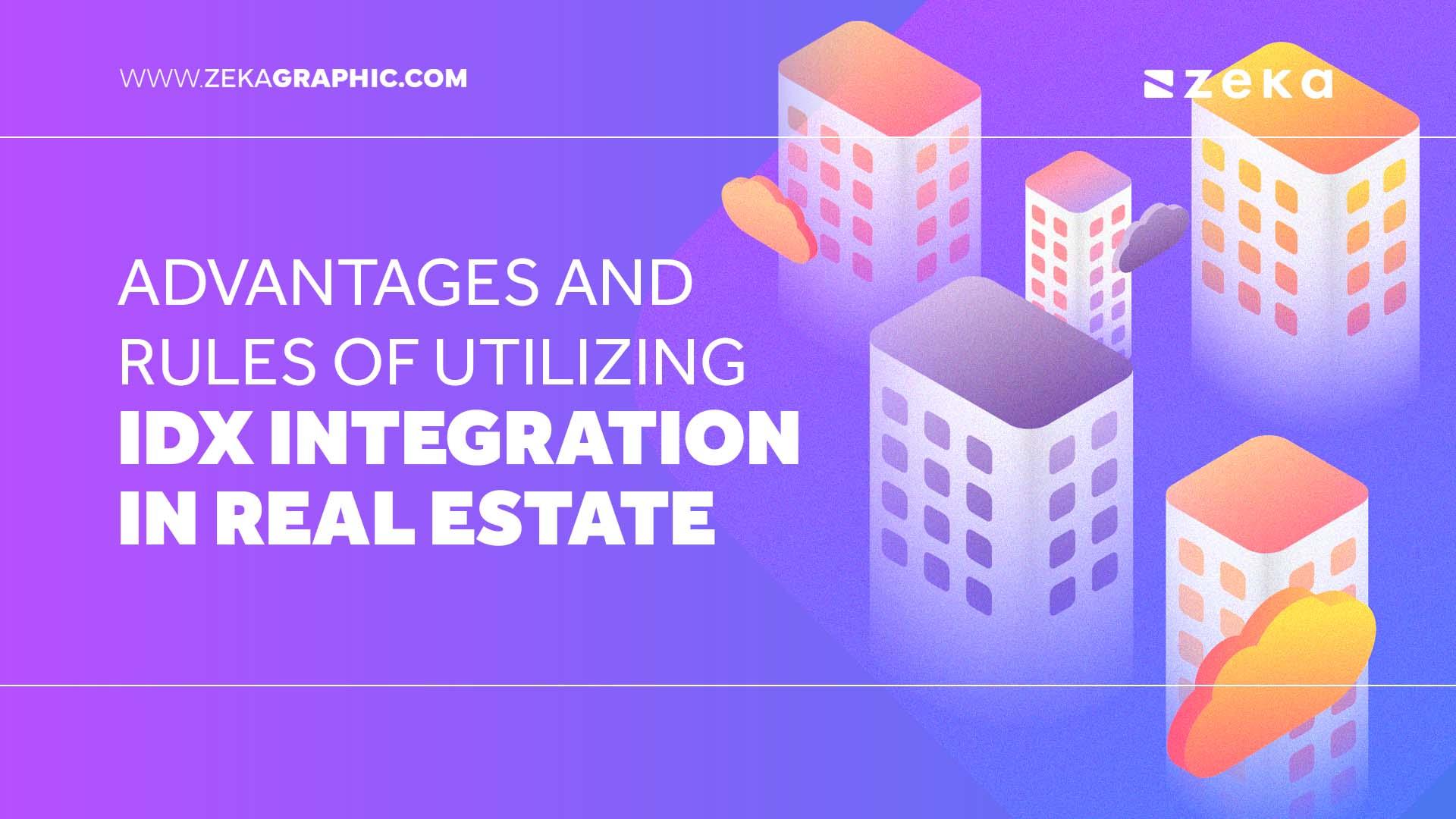
Leveraging IDX Integration for a seamless Property search
In the competitive world of real estate, offering a user-friendly experience is crucial for attracting potential buyers.by utilizing IDX integration, agencies can create a seamless property search experience that keeps visitors coming back. This technology connects your website directly to the MLS (Multiple Listing Service), allowing users to search for properties in real-time without the hassle of navigating through various platforms.
One of the standout features of IDX integration is its ability to provide:
- Comprehensive Listings: Users have access to the latest properties, including detailed descriptions, high-quality images, and essential information such as price and square footage.
- Advanced Search Filters: With customizable search options, potential buyers can narrow down their preferences based on location, price range, property type, and more.
- Map-Based Searches: Interactive maps make it easy for users to visualize property locations,enhancing their overall search experience.
Integrating IDX into your website doesn’t just improve the user experience; it also boosts your SEO rankings. Search engines favor updated content, and with IDX, your site continually refreshes with new property listings. This dynamic content keeps your website relevant and increases the likelihood of attracting organic traffic.
Moreover, IDX enables you to capture valuable leads. By offering features like:
- Saved Searches: users can save their favourite searches and receive notifications about new listings that match their criteria.
- Property Alerts: Agencies can encourage sign-ups for alerts, allowing them to gather contact information while providing a valuable service.
- Integrated Contact Forms: Easily accessible forms allow visitors to reach out for more information or set up viewings, converting interest into action.
To further enhance your IDX integration, consider incorporating a user-friendly dashboard. A dashboard can present analytics about user behavior and preferences, helping you tailor your marketing strategies effectively. The data collected can reveal which properties are getting the most views, allowing you to focus on what’s working.
By leveraging IDX integration, real estate agencies can not only streamline the property search process but also elevate their digital presence. This technology not only fosters a better experience for users but also positions your agency as a forward-thinking leader in the real estate market.

Building Trust with Professional Branding Elements
When it comes to establishing a solid presence in the competitive real estate market, professional branding plays an essential role. Consistent and well-thought-out branding elements not only enhance your agency’s visibility but also build trust with potential clients. Here are key branding components to consider:
- Logo Design: Your logo is frequently enough the first impression clients will have of your agency.Make sure it’s memorable, aligns with your brand’s values, and is adaptable for various platforms, from business cards to your website.
- Color Palette: Choose colors that reflect your agency’s personality. As a notable example, blue frequently enough conveys trust and stability, while green can signify growth and harmony. Maintain consistency across your online platforms for a cohesive look.
- Typography: The fonts you use can say a lot about your brand. Select typefaces that are easy to read and reflect your desired image—serif for traditional elegance, sans-serif for modern simplicity.
But branding goes beyond just visuals; it’s also about the voice of your interaction. Establishing a consistent tone helps create familiarity and rapport with your audience. Whether you opt for a professional, friendly, or authoritative tone, ensure it resonates throughout your website content, social media posts, and email communications.
Another critical aspect of professional branding is incorporating client testimonials and case studies into your website. These elements serve as social proof, demonstrating your agency’s reliability and expertise. Present them in a visually appealing format, such as:
| Client Name | Testimonial |
|---|---|
| Sarah T. | “The team was incredibly helpful and made the buying process seamless!” |
| James L. | “They understood my needs and found the perfect home for me.” |
ensure your branding extends to every interaction potential clients have with your agency. From the user experience on your website to follow-up communications, consistency is key. A well-branded experience not only fosters trust but also increases the likelihood of converting leads into clients.

utilizing Analytics to Continuously Improve Your Website Performance
In the ever-evolving landscape of real estate web design, harnessing the power of analytics is crucial for optimizing your website’s performance. By leveraging data-driven insights, real estate agencies can enhance user experience, drive traffic, and ultimately capture more leads. To stay ahead in a competitive market, consider the following strategies:
- Monitor User behavior: Utilize tools like Google Analytics to track how visitors interact with your site. This data reveals which pages are most popular,where users drop off,and what content keeps them engaged.
- Conduct A/B Testing: Experiment with different designs, calls-to-action, and landing pages. By comparing user responses, you can identify the most effective elements that lead to conversions.
- Analyze Traffic Sources: Understanding where your traffic is coming from—whether it’s organic search, social media, or paid ads—can help you allocate your marketing budget more effectively.
- Review Bounce Rates: A high bounce rate may indicate that your content isn’t resonating with visitors. Use insights from analytics to refine your messaging and offer enticing visuals that keep users on your site longer.
Incorporating these analytical insights into your web design strategy not only improves user experience but also aligns your site with the specific needs and behaviors of your target audience. For instance, if analytics show that visitors spend more time on property listings that include virtual tours, consider prioritizing this feature in your design. Tailoring your website based on real user data fosters a more engaging and personalized experience.
Additionally, regular reviews of your analytics should become a standard practice. Set aside time each month to assess key performance indicators (KPIs) such as conversion rates, page load times, and user demographics. This ongoing evaluation ensures you remain agile, adapting your strategies to meet the changing demands of your audience.
To illustrate the importance of analytics, here’s a simple overview table of potential KPIs you should track:
| Key Performance Indicator | Description |
|---|---|
| Conversion Rate | Percentage of visitors who take a desired action (e.g., filling out a contact form). |
| Bounce rate | Percentage of visitors who leave after viewing only one page. |
| Average Session Duration | Average time users spend on your site during a visit. |
| Traffic Sources | Breakdown of where your visitors are coming from (organic, paid, social, etc.). |
By making informed decisions grounded in analytics, real estate agencies can significantly enhance their website’s performance. Not only does this approach foster a more engaging experience for visitors, but it also streamlines the path to lead conversion. With each insight gained, you’re one step closer to mastering the art of real estate web design.

Implementing Chatbots and Live Chat for Instant Customer Interaction
In today’s fast-paced digital landscape, having a responsive customer service system is crucial for real estate agencies looking to stand out. By integrating chatbots and live chat capabilities into your website, you create an environment where potential leads can connect with you instantly. This immediate interaction not only enhances user experience but also improves conversion rates significantly.
Chatbots are excellent for handling common inquiries around the clock, ensuring that no question goes unanswered. They can assist with:
- Property availability
- Scheduling viewings
- Providing neighborhood information
- Answering frequently asked questions
With advanced AI and machine learning, chatbots can learn from interactions, making them more effective over time. Imagine a potential buyer visiting your site at midnight and getting instant responses! This not only builds trust but also keeps your agency top-of-mind.
Conversely, live chat features provide a personal touch that can be pivotal in sealing the deal. When a potential client reaches out, having a real person ready to engage can make all the difference. Consider the following benefits of live chat:
- Real-time assistance: Answer questions immediatly to keep potential clients engaged.
- Human connection: Build rapport and trust through personal interaction.
- Higher engagement rates: Live chat can lead to longer site visits and more inquiries.
To optimize your real estate website’s chat functionalities, consider creating a robust FAQ section powered by your chatbot. Here’s a simple table illustrating how you might structure this section:
| Question | Chatbot Response |
|---|---|
| What is the buying process? | The buying process involves several steps, including pre-approval, house hunting, and closing. |
| Do you offer virtual tours? | Yes! We provide virtual tours for many of our listings. Would you like to schedule one? |
| How can I get a property valuation? | You can request a property valuation through our website, and we’ll get back to you shortly! |
Incorporating these technologies not only streamlines communication but also positions your agency as modern and accessible. As you master the art of real estate web design, remember that the goal is to create a seamless experience that encourages potential leads to take the next step. by implementing chatbots and live chat,you’re ensuring that your agency is always ready to interact—no matter the time or day.
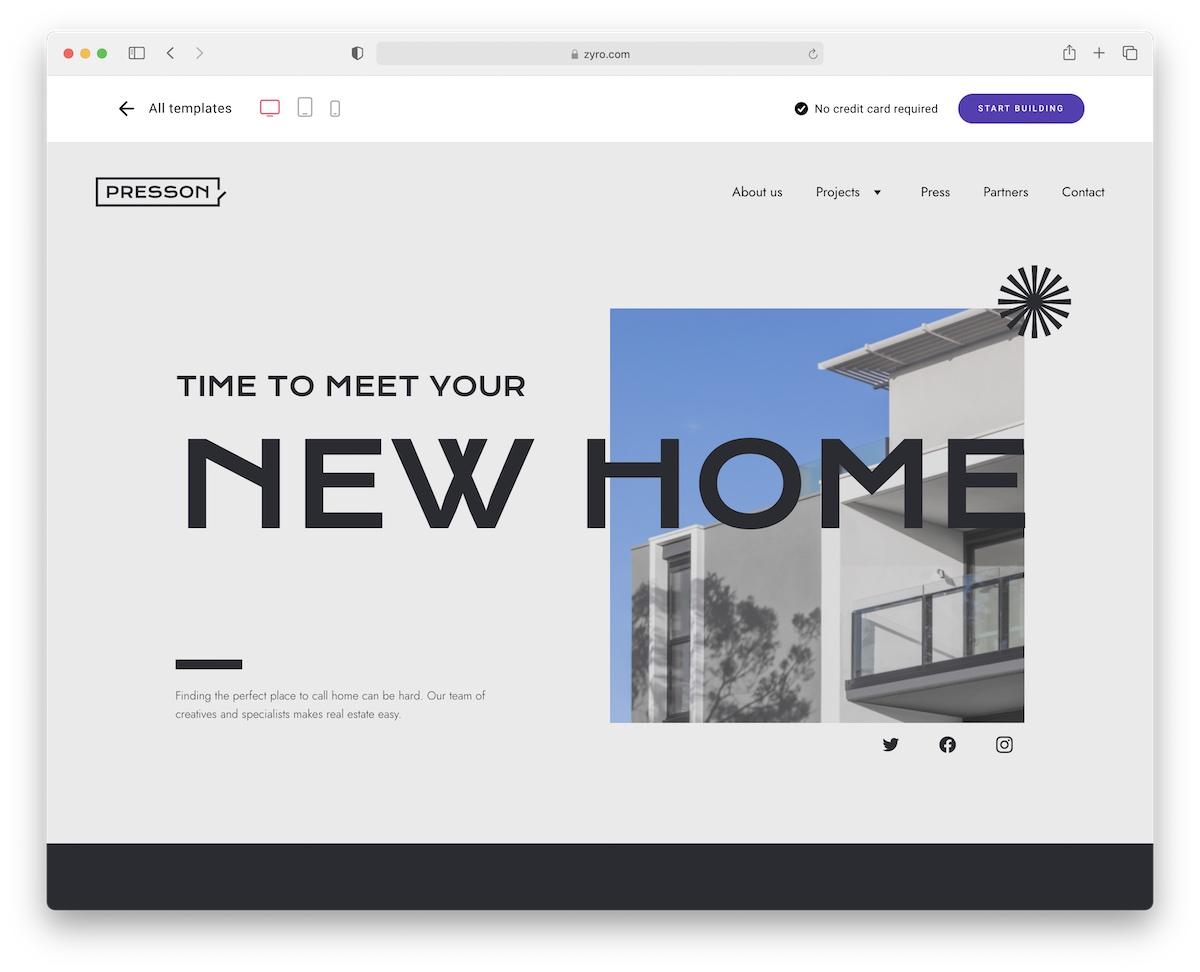
Staying Ahead of Trends: Future-Proofing Your Real Estate Website
In today’s rapidly evolving digital landscape, keeping your real estate website relevant and appealing is more crucial than ever. Trends in web design, user experience, and technology are constantly shifting, and staying ahead can significantly impact your ability to attract and convert leads.Here’s how to ensure your website is future-proof and ready to adapt to new demands.
Embrace Responsive Design
With more people browsing on mobile devices,a responsive design is no longer optional; it’s essential. A responsive website automatically adjusts to any screen size,providing an optimal viewing experience. Consider implementing:
- Fluid grids that resize content based on the screen size.
- Flexible images that support varying resolutions.
- Media queries to apply different styles based on device characteristics.
Utilize SEO Best Practices
search engine optimization is a cornerstone of online visibility. Implementing SEO best practices from the outset will ensure your website stays relevant in search rankings. Key strategies include:
- Conducting thorough keyword research to target your audience effectively.
- Optimizing meta tags, headers, and alt text for better indexing.
- Creating high-quality,engaging content that addresses common questions.
Incorporate Innovative Technology
Integrating the latest technologies can set your website apart.Consider using:
- Virtual tours that enhance the property viewing experience.
- Chatbots for instant customer engagement and support.
- AI-driven insights to personalize user experiences based on behavior.
Maintain a Clean and Simple Design
A cluttered website can overwhelm visitors, leading them to quickly bounce away. A clean, minimalist design that emphasizes essential information can improve user experience. Focus on:
- Clear navigation that guides users intuitively.
- White space to enhance readability and focus.
- High-quality images that showcase properties effectively.
Leverage Analytics for Continuous enhancement
the ability to analyze and adapt your website based on user behavior is crucial for future-proofing.Utilize analytics tools to monitor:
| Metric | Importance |
|---|---|
| Bounce Rate | Indicates content relevance and user satisfaction. |
| Conversion Rate | Measures how many visitors take desired actions. |
| Page load Time | Impacts user experience and SEO ranking. |
Regularly review these metrics to identify areas for improvement and implement changes that resonate with your audience.
frequently Asked Questions (FAQ)
Q&A: Mastering Real Estate Web Design: How Agencies Can Capture More Leads Online
Q: Why is web design crucial for real estate agencies looking to attract more leads?
A: Great question! In today’s digital age, your website is frequently enough the first impression potential clients have of your agency. A well-designed website not only showcases listings beautifully but also enhances user experience, builds trust, and encourages visitors to take action. Think of it as your 24/7 open house. If it’s engaging and easy to navigate, you’re more likely to convert visitors into leads.
Q: What are some key elements that make a real estate website effective?
A: An effective real estate website should have a clean, responsive design that works well on all devices, high-quality images, and intuitive navigation. Adding features like advanced property search filters, interactive maps, and a blog can further enhance user engagement. don’t forget about clear calls to action (CTAs)! they guide visitors on what to do next, whether it’s signing up for a newsletter or scheduling a viewing.
Q: How can real estate agencies improve their site’s search engine optimization (SEO)?
A: SEO is essential for driving organic traffic to your site. Start by using relevant keywords throughout your content, including property descriptions and blog posts. Ensure that your images have alt tags and that you have a mobile-friendly layout. Creating quality backlinks and regularly updating your content will boost your visibility on search engines,making it easier for potential clients to find you.
Q: What role does content play in web design and lead generation?
A: Content is the backbone of your web design strategy! High-quality, informative content not only establishes your expertise but also keeps visitors on your site longer, which is a positive signal to search engines. Consider adding neighborhood guides, market insights, and tips for buyers and sellers. This not only attracts leads but also builds trust and demonstrates that you genuinely care about helping them.
Q: can you share some tips for enhancing the user experience on a real estate website?
A: Absolutely! First,ensure your website loads quickly—nobody likes waiting! Use clear and concise language,and make sure navigation is intuitive. Incorporate visuals where possible to break up text. another great tip is to include testimonials and case studies to add a personal touch.Lastly, consider implementing chatbots for instant communication; prospects frequently enough appreciate immediate answers to their queries.
Q: How can agencies track their website’s performance and lead generation?
A: Tracking performance is critical! Use tools like Google Analytics to measure traffic, user behavior, and conversion rates.Pay attention to which pages keep visitors engaged and which ones might need improvement. Also, consider tracking your lead sources to understand where your best leads are coming from. This data will help you refine your strategies and maximize your online efforts.
Q: What’s the biggest mistake agencies make with their real estate websites?
A: One of the biggest mistakes is neglecting mobile optimization. With more people searching for properties on their smartphones, a website that isn’t mobile-friendly can turn potential leads away. Additionally, failing to keep content fresh can make your site feel outdated and less trustworthy. Regular updates and attention to detail can make a world of difference!
Q: Any final thoughts for agencies looking to master their real estate web design?
A: Absolutely! Remember that your website is an ongoing project—it requires regular attention and updates. stay informed about design trends and technology advancements to stay ahead of the competition.Most importantly, keep your target audience in mind: design with them in mind, and they’ll be more likely to engage with your agency. Happy designing!
The Way Forward
As we wrap up our exploration of mastering real estate web design, it’s clear that the digital landscape is brimming with potential for agencies willing to embrace innovative design strategies.By prioritizing user experience, optimizing for mobile, and incorporating engaging visuals, you can create an online presence that not only attracts visitors but also converts them into loyal clients.
remember, in the competitive world of real estate, your website is often the first impression prospective clients have of your agency.Make it count! By implementing the tips we’ve discussed, you can set yourself apart and turn your website into a powerful lead-generating machine.
Don’t wait to get started. The sooner you revamp your online presence, the quicker you’ll see results. So go ahead, take the plunge! Your future clients are just a click away, and with the right web design, you can capture their attention and their business. Let’s turn your vision into reality and watch your agency thrive in the digital age!

